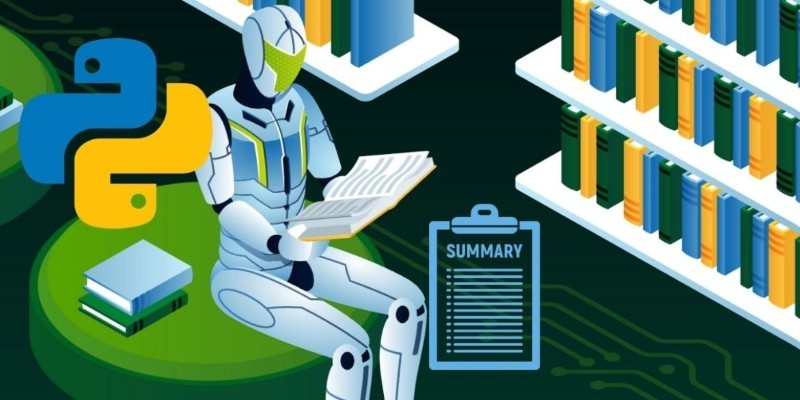Advertisement
Artificial intelligence is no longer just a buzzword. It's showing up in industries where accuracy, timing, and people skills matter—a combination that once seemed out of reach for machines. Real estate is one of those fields where the human touch is still central, but AI is now working behind the scenes to make everything smarter, quicker, and, in some cases, more honest.
It's helping agents spend less time on repetitive tasks, giving buyers better options, and even helping investors make choices they wouldn't have seen on their own. The technology isn’t replacing anyone—it’s making each step sharper and faster.
AI is changing how people find homes. Real estate search used to be limited by filters and keywords. You'd enter a location and price range and hope the listings matched what you'd in mind. Now, AI-powered platforms can learn from a user's behavior—what listings they click on, how long they look, what kind of features they seem to prefer—and refine future search results without needing to ask.
This means a family looking for a quiet neighborhood close to a school might start seeing properties that match that profile even if they didn’t check those specific boxes. Instead of relying entirely on the buyer to know what they want upfront, AI systems can observe patterns and offer more accurate matches. Some apps now include conversational search features, where you can describe a property in natural language—like “a bright two-bedroom place near a park with an open kitchen”—and get relevant results.
Real estate agents are also using this. AI systems can flag listings that suit a client's preferences before they hit the market or notify agents when price trends indicate a favorable time to purchase a property. This cuts down on manual screening and makes the search process quicker on both ends.
One of the most practical uses of AI in real estate is in prediction. AI can analyze historical price trends, current market dynamics, local development plans, crime rates, school rankings, seasonal factors, and numerous other variables to estimate a property's future value. These tools don't just give a single price estimate—they offer a probability range, often broken down by period.

This has been a major shift for real estate investors. Instead of guessing or relying on general market sentiment, they’re using machine learning models to weigh decisions. These models can flag neighborhoods that are about to grow in value or spot overvalued areas likely to cool off. The ability to run “what if” scenarios helps investors balance risk with more information than ever before.
AI is also helping developers decide what to build and where. By feeding in demographic data, lifestyle trends, and infrastructure developments, AI tools can point out where a high-rise condo might work better than single-family homes or where rental demand is climbing faster than supply.
For individual sellers or buyers, this kind of prediction can help set or negotiate fair prices. AI systems can suggest when to buy, hold, or sell based on more than gut feeling. That level of accuracy—built on data rather than assumptions—is making pricing less of a gamble.
AI has made it possible to interact with real estate without stepping into an office or visiting a property right away. Virtual tours powered by computer vision let potential buyers "walk through" a space using 3D imaging. Some platforms even let users rearrange furniture, change wall colors, or switch the lighting to see how the place would feel at different times of day.
But AI’s reach goes beyond the visual. Chatbots on listing websites and real estate platforms are getting better at answering questions and directing users to the right listings. Unlike earlier versions that were stiff and limited, today’s bots can handle multiple kinds of queries and often sound natural. They don’t replace the agent, but they can answer quick questions after hours or collect enough information to give a more tailored experience when the agent follows up.
Automation has also streamlined many back-end tasks. AI tools can sort documents, flag missing information in contracts, or even check compliance with local laws. For example, instead of manually going through rental applications, AI can assess income stability, credit behavior, and rental history faster and often more accurately than a person. This saves time and reduces the chance of human error, especially when handling large volumes of applications or listings.
Real estate professionals are also using AI to manage their calendars, respond to leads, and run follow-up campaigns based on where each client is in their buying or selling journey. This reduces repetitive work and helps them stay focused on personal service, where human instincts still lead.
AI’s role in real estate now includes fraud prevention. With more transactions happening online, scams and identity theft are growing concerns. AI tools can detect unusual behavior, verify documents, and flag inconsistencies in records.

These systems cross-check data from multiple sources to confirm title clarity, ownership, and financial history. They also spot anomalies in loan applications or detect digitally altered listing photos and suspicious price changes.
Risk-scoring tools help banks and lenders assess loan applications more accurately. Instead of relying only on credit scores, AI can review broader data—public records, payment habits, and more—to give a fuller view of borrower reliability. While it doesn't replace human judgment, it adds useful depth, especially for complex cases.
These tools reduce legal disputes and speed up verifications that once took days. More than saving time, they build trust—buyers and sellers feel more secure knowing the system flags potential red flags.
AI in real estate isn't replacing people—it's simplifying the process. It helps match buyers to properties more quickly, supports smarter investment decisions with predictive tools, and handles routine tasks, allowing agents to focus on their clients. From pricing to paperwork, AI reduces delays and errors. Working quietly in the background makes real estate more efficient while keeping the human connection at the center where it matters most.

How fine-tuning Llama 2 70B using PyTorch FSDP makes training large language models more efficient with fewer GPUs. A practical guide for working with massive models

What data management is, why it matters, the different types involved, and how the data lifecycle plays a role in keeping business information accurate and usable

How Würstchen uses a compressed latent space to deliver fast diffusion for image generation, reducing compute while keeping quality high

Is Claude 2 the AI chatbot upgrade users have been waiting for? Discover what makes this new tool different, smarter, and more focused than ChatGPT.

Deploy models easily and manage costs with the Hugging Face Hub on the AWS Marketplace. Streamline usage and pay with your AWS account with-out separate billing setups

How Making LLMs Lighter with AutoGPTQ and Transformers helps reduce model size, speed up inference, and cut memory usage—all without major accuracy loss

How Enterprise AI is transforming how large businesses operate by connecting data, systems, and people across departments for smarter decisions

How GANs are revolutionizing fashion by generating high-quality design images, aiding trend forecasting, e-commerce visuals, and creative innovation in the industry

Discover the best places to see the Northern Lights in 2024. Our guide covers top locations and tips for witnessing this natural spectacle

What makes Siamese networks so effective in comparison tasks? Dive into the mechanics, strengths, and real-world use cases that define this powerful neural network architecture

How AI in food service is transforming restaurant operations, from faster kitchens to personalized ordering and better inventory management

How to use transformers in Python for efficient PDF summarization. Discover practical tools and methods to extract and summarize information from lengthy PDF files with ease